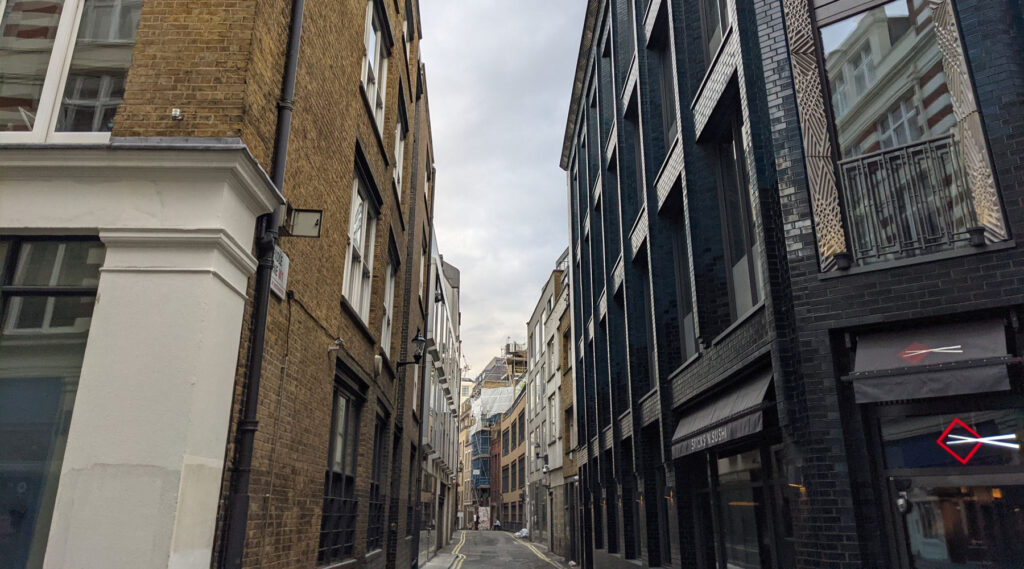A long narrow passageway in Soho that owes its origins to the era of horse-drawn carriage and the grand houses on the other side of the lane.
When all around here was still fields, its fields were owned by Eton College until taken by the Crown in the 1530s, and was known as Windmill Fields. In around 1575, the land was leased to Thomas Poultney, and his descendants later chopped the land up to be sublet to developers.
The first major laying out of roads and housing comes from just after the Great Fire of London, when there was understandably an urgent need for new homes, although much of the housing built at the time was very quick and cheap, and the area gained a reputation for poverty.
The whole area was rebuilt in the 1720s though with the layout we have today, and at the time Bridle Lane appeared to be mews stables backing onto slightly grander houses facing Golden Square and Great Poultney Street.
By the time of the Goad’s Insurance Maps in 1889 though, the area is showing up as lined with small factories, mostly catering to the arts and crafts, such as two piano manufacturers, a number of picture framers and glass warehouses and cloth workers.
Today it’s a mix of offices and residential.
What looks on the corner of Brewer Street and Bridle Lane to be a recent development, is in fact a rather successful refurbishment of a tired 1980s office block, where the pale brick has been stained a darker colour and office windows recessed behind bronzed panels.
Further up, another block of 1980s residential flats is the John Broadwood House, a block of social rent flats owned by the Soho Housing Association, before you reach a mix of modern offices facing a classic Edwardian building with glazed tiles to help reflect light into the alley.
A set of 1990s flats with pale brickwork face a rather shabby 1990s office block with grey concrete, but at the far end, finally, something interesting to see. A blue-green tile facade of a mixed-use building with offices and residential above a shop constructed in 2010 and replacing a rather grim-looking old brick office building. That had been a police section house built in 1910, and while of architectural interest, it lacked any ground floor presence, just solid walls, and had fallen into some disrepair.
The north end is Beak Street, named after Thomas Beake, later one of the Queen’s messengers, who, in the late 17th century, obtained the land on the north side, between Regent and Kingly streets. It used to be called Silver Street, and the replacement building on the corner of Beak Street and Bridle Lane is finished in silvered blue-green tiles.










It’s a strange feeling to read about this lane the day after I was walking round the streets of Soho! I’m always looking for quiet alleyways to take to get places and to avoid the ridiculously taxi-clogged roads (cannot believe how many there are on such narrow streets). I went just around this lane and was taking Peter Street to Ingestre Place and then was above Bridle Lane. Ah.